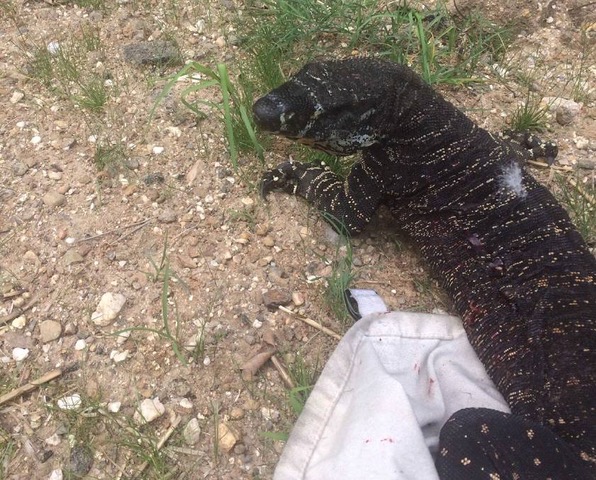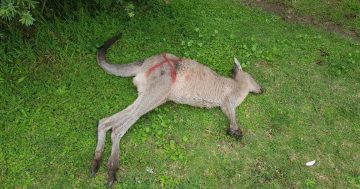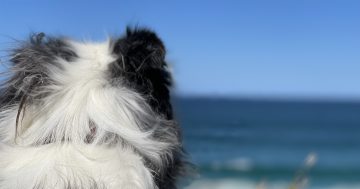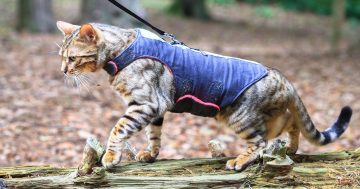
This badly wounded goanna had to be put down after a dog attack on the NSW South Coast. Photo: Kay Mallitt.
Dog owners have been reminded about how important it is for them to watch their pets around wildlife after recent incidents where native animals were killed on the NSW South Coast.
In March, WIRES Mid-South Coast was asked to help a young kangaroo that had been attacked by a greyhound in Kioloa, but it was dead by the time a rescuer arrived.
The greyhound that attacked the kangaroo had accidentally slipped its leash.
Even more recently, volunteers were called to help a brushtail possum in Moruya that had to be euthanised because of “horrific injuries caused by a dog attack”, said a WIRES spokesperson.
“We are all aware of the problem cats can pose to birds and small animals, but pet dogs can also pose a threat to wildlife,” said the spokesperson.
“Animals that are subject to dog attacks may also die from shock or infection from the injuries inflicted that may not look too bad at first sight.”
A University of Tasmania thesis, released in 2011, said domestic dogs have a more damaging effect on native wildlife in Tasmania than domestic cats.
“This is why it is important that owners keep their dogs on leashes when they are away from home,” said the WIRES spokesperson.
The spokesperson said many greyhounds have been trained to chase and attack animals, in a practice called ‘blooding’, and until July 2019 all pet greyhounds in NSW were required to wear a muzzle in public unless they had completed an approved retraining program.
“Now registered pet greyhounds do not have to wear a muzzle unless they are in an off-leash area or have not done the approved training,” said the spokesperson.
“However, owners may choose to muzzle their dogs and one would hope they would do it in wildlife areas.”
Many dog attacks on wildlife occur in the dog’s own backyard, according to an information booklet released by the NSW Government about protecting wildlife from domestic dogs.
“Generally, the larger the dog, the more likely it could be responsible for a fatal attack on a native species,” said the government in the booklet.
“Many people exercise their dogs in wildlife habitats despite signs prohibiting this, leading to attacks on native wildlife.
“Existing management strategies to reduce dog attacks rely heavily on owners changing their behaviour. But bringing about this change is difficult.”
The NSW Government believes physical separation is the most effective means of protecting wildlife from domestic dogs, which includes erecting exclusion fencing as well as establishing and enforcing ‘no-dog’ areas.
The WIRES spokesperson said it is important to call WIRES on 1300 094 737 following an incident, or get an animal attacked by a dog to a vet as soon as possible.









